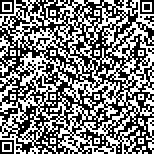刘孟,倪朝民,昝明,陶泽林,崔俊才,陈进,范文祥,穆景颂,王丽,岳童,庄建海.改良坐-站转移训练对脑卒中偏瘫患者下肢运动功能及平衡能力的影响[J].中华物理医学与康复杂志,2015,(10):743-746
扫码阅读全文

|
| 改良坐-站转移训练对脑卒中偏瘫患者下肢运动功能及平衡能力的影响 |
|
| |
| DOI: |
| 中文关键词: 脑卒中 偏瘫 坐-站转移 平衡 下肢负重 |
| 英文关键词: Stroke Hemiplegia Sit-to-stand training Balance Lower limb loading |
| 基金项目:安徽省科技厅年度重点科研项目(11070403064) |
|
| 摘要点击次数: 3573 |
| 全文下载次数: 4994 |
| 中文摘要: |
| 目的观察改良坐-站训练对脑卒中偏瘫患者下肢运动功能及平衡能力的影响。 方法采用随机数字表法将50例脑卒中后偏瘫患者分为实验组及对照组,每组25例。2组患者于生命体征稳定后均给予常规康复治疗,对照组患者在此基础上辅以常规坐-站转移训练,实验组患者则辅以改良坐-站转移训练(即在患足置后情况下进行坐-站转移训练)。于治疗前、治疗4周后分别采用Berg平衡量表(BBS)、Fugl-Meyer评定法下肢部分(FMA-L)对2组患者进行评定,同时使用AL-080型平衡功能评估系统对2组患者坐-站转移所需时间、下肢负重差异(ALD)及人体重心在冠状面上摆动幅度(COGX)进行评测,并观察其差异性。 结果与治疗前比较,2组患者治疗后其BBS评分、FMA-L评分、坐-站转移所需时间、ALD及COGX均显著改善(P<0.05);进一步分析发现,实验组患者治疗后其BBS评分[(47.5±5.3)分]、FMA-L评分[(22.4±7.3)分]、坐-站转移所需时间[(3.01±0.61)s]、ALD[(17.24±5.35)]及COGX[(2.87±0.52)cm]均显著优于对照组水平(P<0.05)。 结论改良坐-站转移训练能进一步促进脑卒中偏瘫患者下肢运动功能及平衡能力提高,该疗法值得临床推广、应用。 |
| 英文摘要: |
| Objective To observe the effects of a modified sit-to-stand (STS) training protocol on balance and motor functions among stroke survivors with a paretic lower limb. Methods Fifty stroke survivors with hemiplegia were randomly assigned to a control or an experimental group (n=25 for both groups). All were treated with the ordinary physical training once their vital signs were steady. The patients in the control group received conventional STS training, while the patients in the experimental group were given a modified version in which the paretic foot was placed posterior. Before and after four weeks of treatment, the lower limb portion of the Fugl-Meyer assessment (FMA-L) and the Berg Balance Scale (BBS) were used to assess lower limb function and balance. The time for completing the STS maneuver, the average load difference (ALD) between the left and right leg and the mediolateral sway of the center of gravity (COGX) were also observed. ResultsComparing before and after the training, the average FMA-L and BBS scores, the time required, the ALD and COGX of both groups improved significantly. After the training, however, the values in the experimental group were significantly better than those of the control group. ConclusionsThe modified STS protocol better promotes balance and motor function in a paretic lower limb among stroke survivors with hemiplegia. Such training is worth applying in clinical practice. |
|
查看全文
查看/发表评论 下载PDF阅读器 |
| 关闭 |